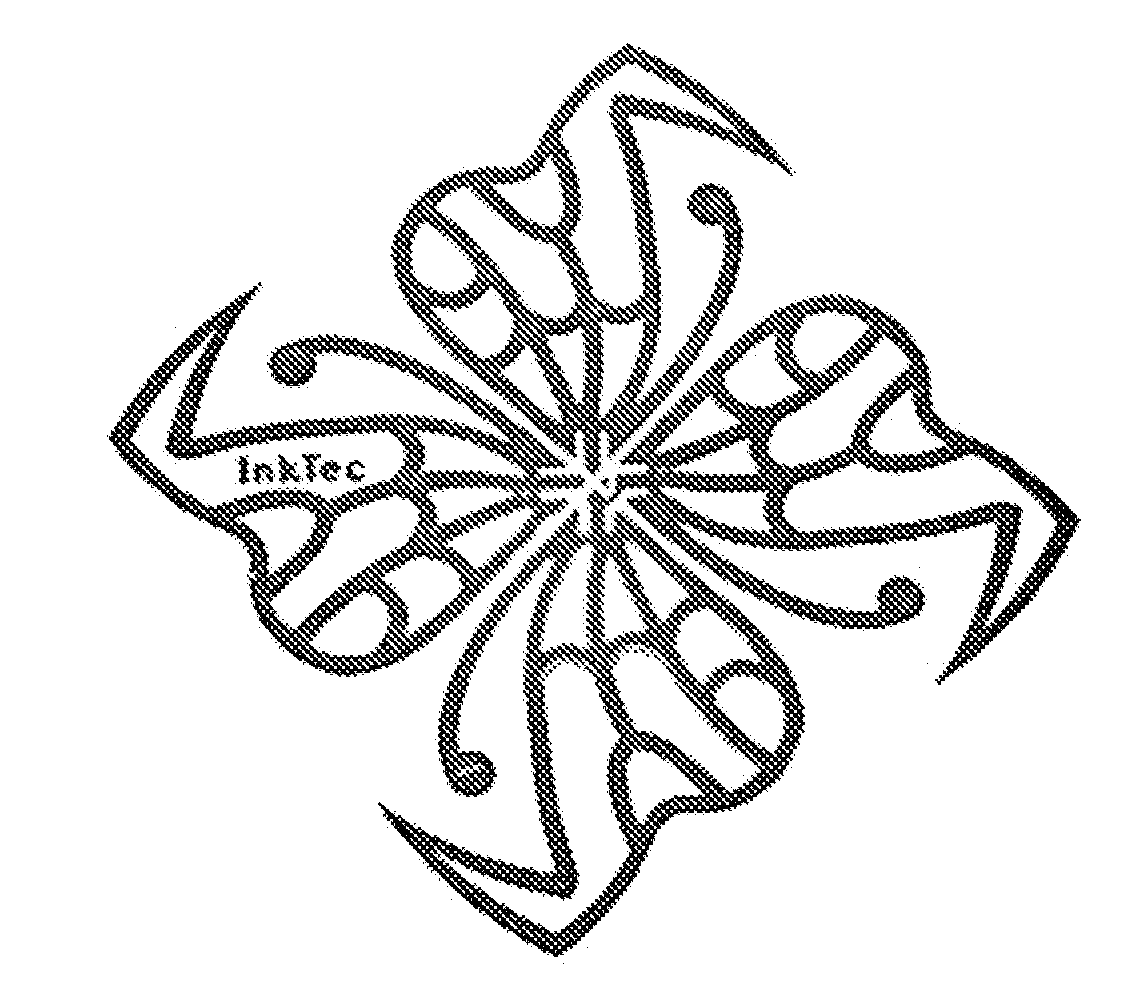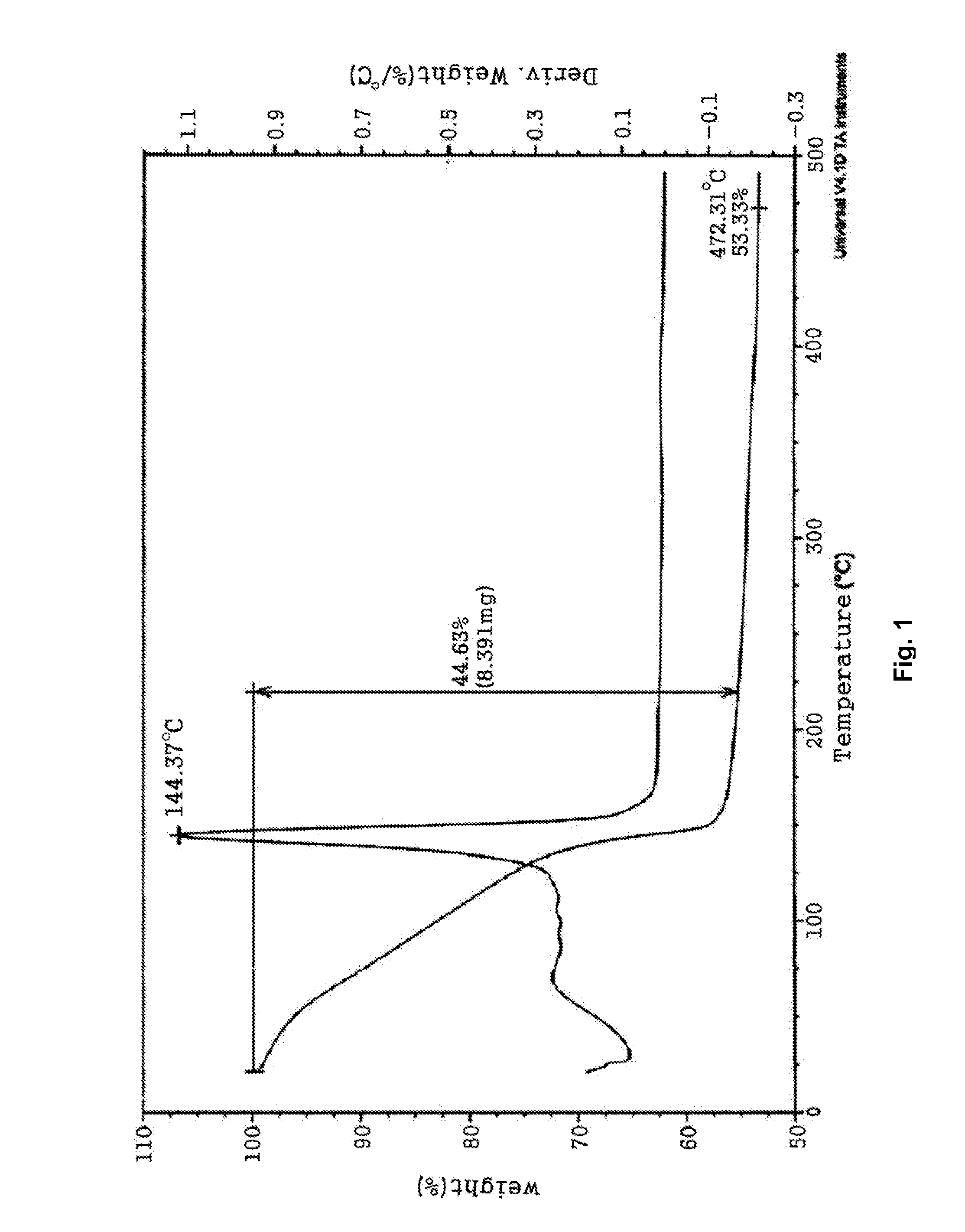Conductive Inks and Manufacturing Method Thereof
a technology of conductive inks and manufacturing methods, applied in the direction of conductive materials, railway signalling, vacuum evaporation coating, etc., can solve the problems of uneconomical and less stable methods, inability to apply to a variety of substrates, and complicated processes, etc., to achieve easy control of metal content and film thickness, good conductivity, and easy formation of uniforms
- Summary
- Abstract
- Description
- Claims
- Application Information
AI Technical Summary
Benefits of technology
Problems solved by technology
Method used
Image
Examples
example 1
[0059]9.52 g (31.48 mmol) of 2-ethylhexylammonium 2-ethylhexylcarbamate, a viscous liquid, was dissolved in a mixture solution comprising 10.00 mL of methanol and 3.00 mL of aqueous solution in a 50 mL Schlenk flask equipped with a stirrer. Then, 1.00 g (15.74 mmol) of copper powder (Aldrich, particle size=1-5 microns) was added and reaction was performed at room temperature for 30 minutes under oxygen bubbling. As the reaction proceeded, the reaction mixture turned into a dark brown slurry and finally into a blue, transparent solution. The solvent was removed from the reaction solution in vacuum to obtain 7.15 g of a blue copper complex compound. Thermogravimetirc analysis (TGA) confirmed that the copper content was 11.28 wt %. To 3.00 g of the copper complex compound were added 5.00 g of copper flake (TSC-20F, Chang Sung) 0.20 g of polyvinylbutyral (BS-18, Wacker), a binder, dissolved in 1.80 g of butylcarbitol. After 10 minutes of stirring, the mixture was passed through a three-...
example 2
[0060]6.99 g (31.48 mmol) of 3-methoxypropylammonium 3-methoxypropylcarbamate, a viscous liquid, was dissolved in 2.00 g of a mixture solution comprising 5.00 mL of methanol and 50 wt % aqueous hydrogen peroxide(H2O2) solution in a 50 mL Schlenk flask equipped with a stirrer. Then, 1.00 g (15.74 mmol) of metallic copper was added and reaction was performed at room temperature for 2 hours. As the reaction proceeded, the reaction mixture turned into a brown slurry and finally into a blue, transparent solution. The solvent was removed from the reaction solution in vacuum to obtain 5.58 g of a blue copper complex compound. Thermogravimetirc analysis (TGA) confirmed that the copper content was 16.26 wt %. 1.00 g of the copper complex compound was dissolved, by adding 1.00 g methanol. Then, 8.00 g of a complex compound obtained by reacting a 1:1 (molar ratio) mixture of 2-ethylhexylammonium 2-ethylhexyl carbamate and 2-methoxyethylammonium 2-methoxyethylcarbamate with silver oxide (silver...
example 3
[0061]7.53 g (41.88 mmol) of isopropyl ammonium isopropylcarbonate was dissolved in 1.89 g of a mixture solution comprising 20.00 mL of methanol and 50 wt % aqueous hydrogen peroxide(H2O2) solution in a 50 mL Schlenk flask equipped with a stirrer. Then, 1.00 g (6.98 mmol) of copper oxide (I) was added and reaction was performed at room temperature for 2 hours. As the reaction proceeded, the reaction mixture turned into a brown slurry and finally into a blue, transparent solution. The solvent was removed from the reaction solution in vacuum to obtain 6.28 g of a blue copper complex compound. Thermogravimetirc analysis
[0062](TGA) confirmed that the copper content was 14.17 wt %. 3.00 g of the copper complex compound was added to 2.80 g of a transparent butylcellosolve solution in which 4.00 g of silver flake (EA0295, Chemet) and 0.20 g of polyvinylbutyral (Wacker), a binder, were dissolved. After 10 minutes of stirring, the solution was passed through a three-roll mill for 5 times to ...
PUM
| Property | Measurement | Unit |
|---|---|---|
| decomposition temperature | aaaaa | aaaaa |
| size | aaaaa | aaaaa |
| size | aaaaa | aaaaa |
Abstract
Description
Claims
Application Information
 Login to View More
Login to View More - R&D
- Intellectual Property
- Life Sciences
- Materials
- Tech Scout
- Unparalleled Data Quality
- Higher Quality Content
- 60% Fewer Hallucinations
Browse by: Latest US Patents, China's latest patents, Technical Efficacy Thesaurus, Application Domain, Technology Topic, Popular Technical Reports.
© 2025 PatSnap. All rights reserved.Legal|Privacy policy|Modern Slavery Act Transparency Statement|Sitemap|About US| Contact US: help@patsnap.com



